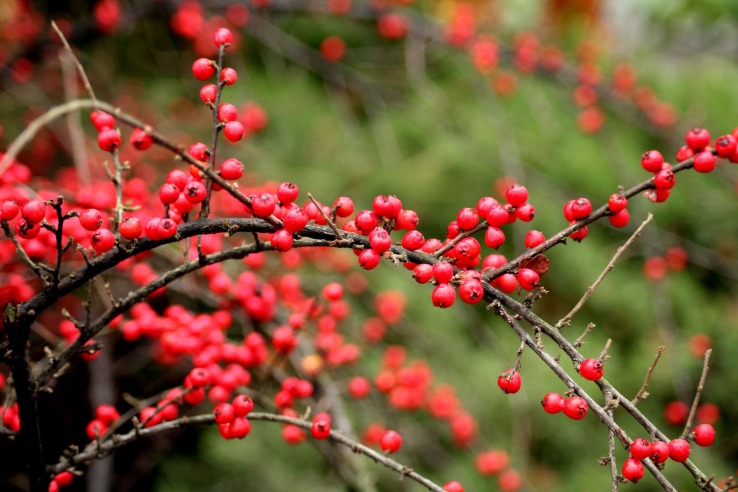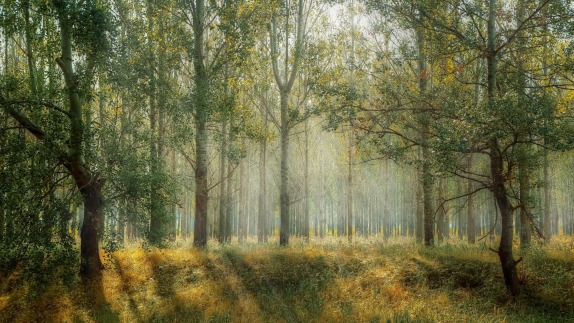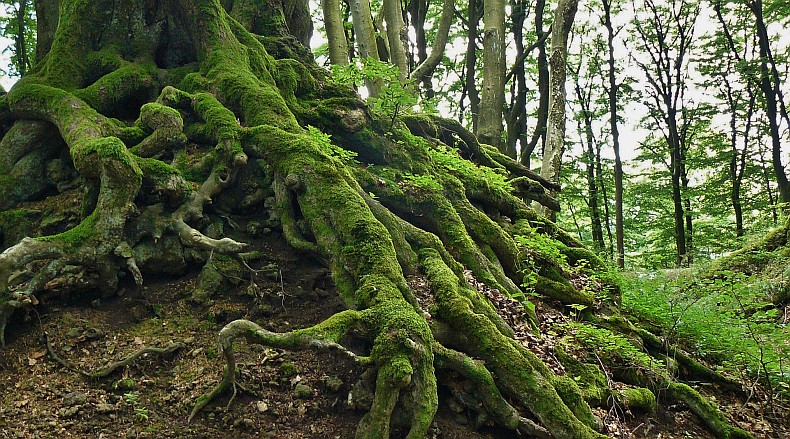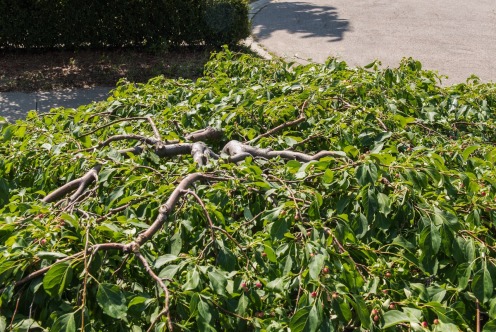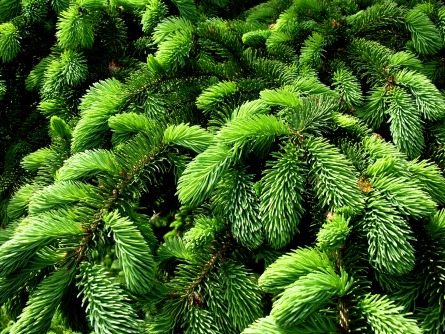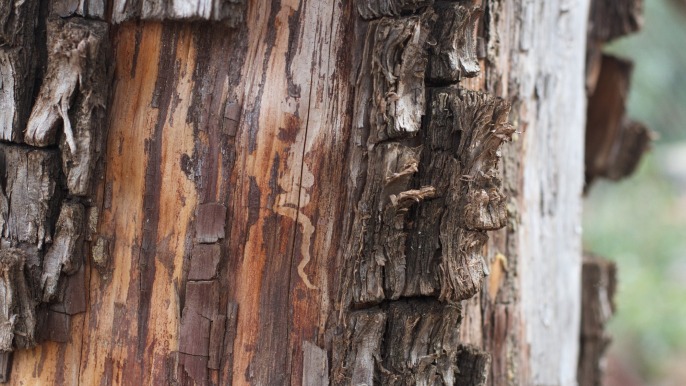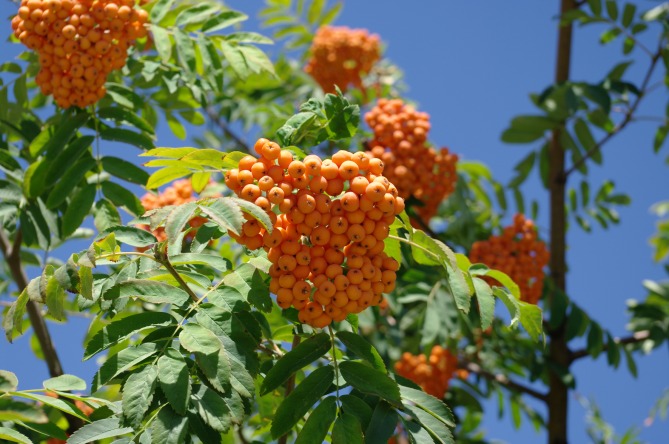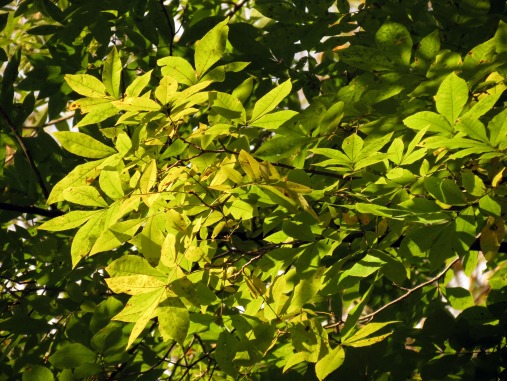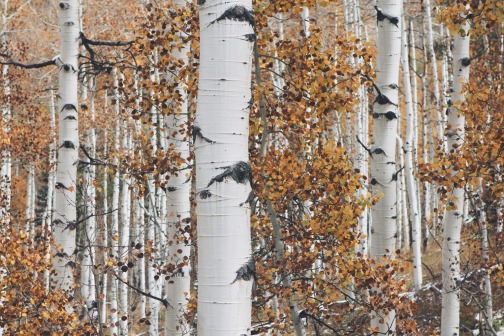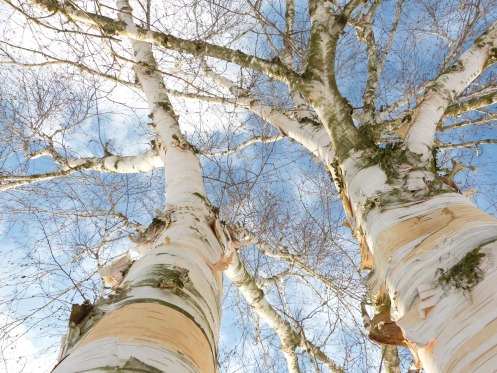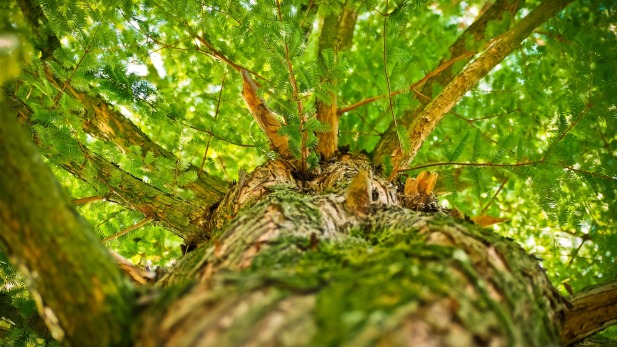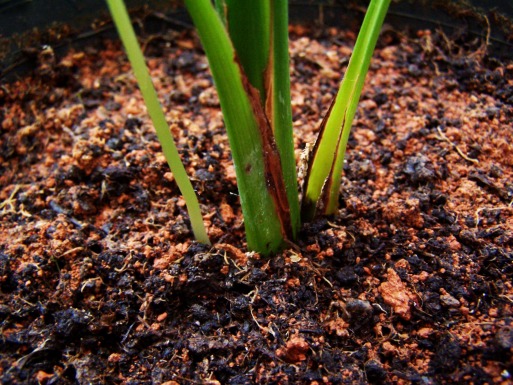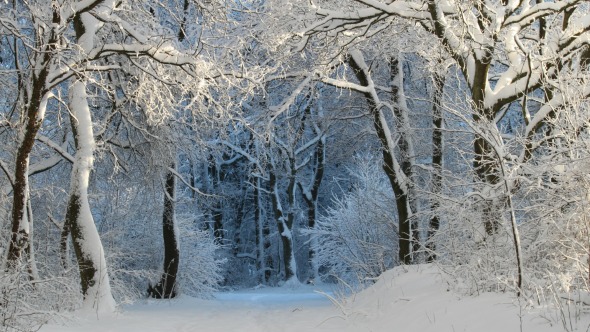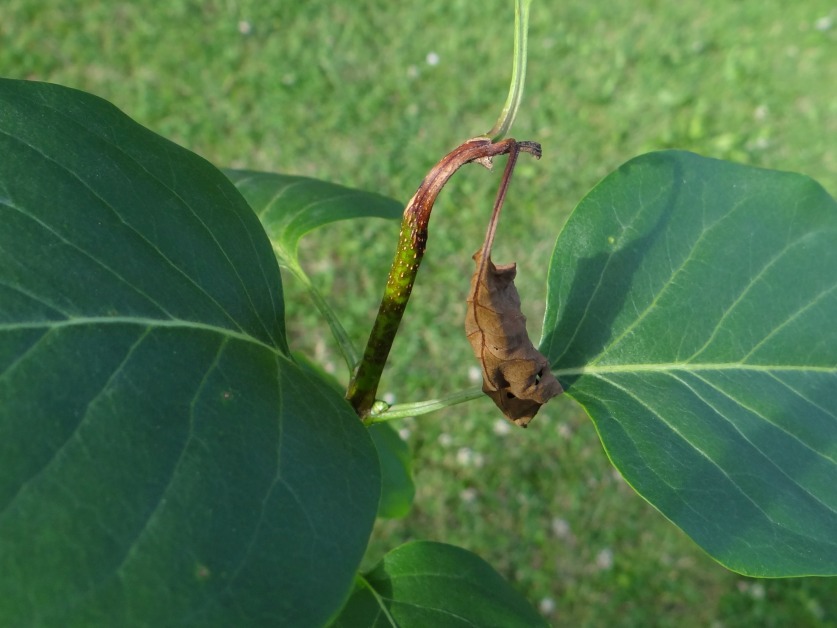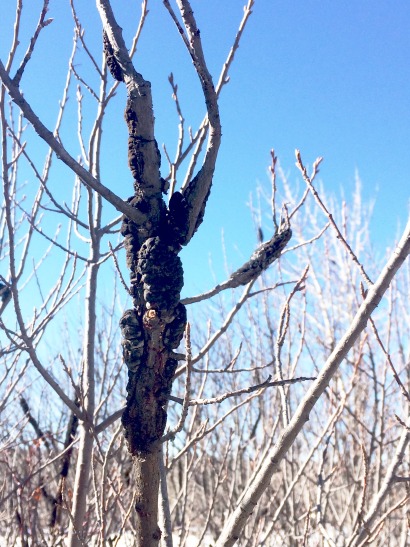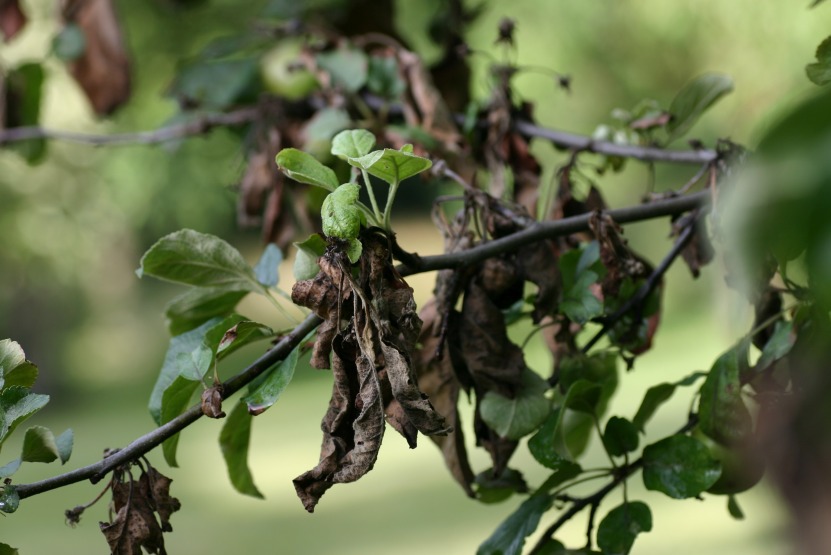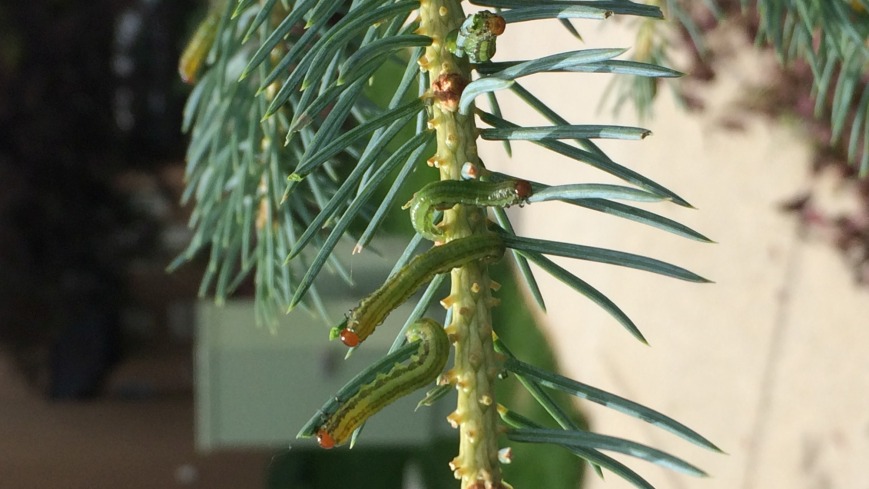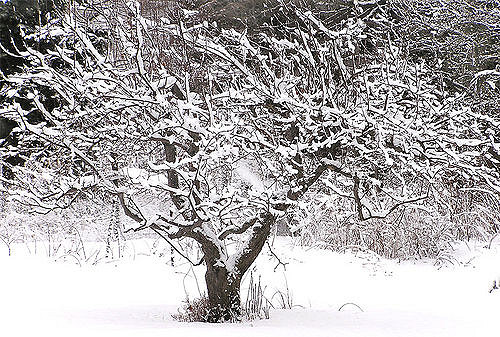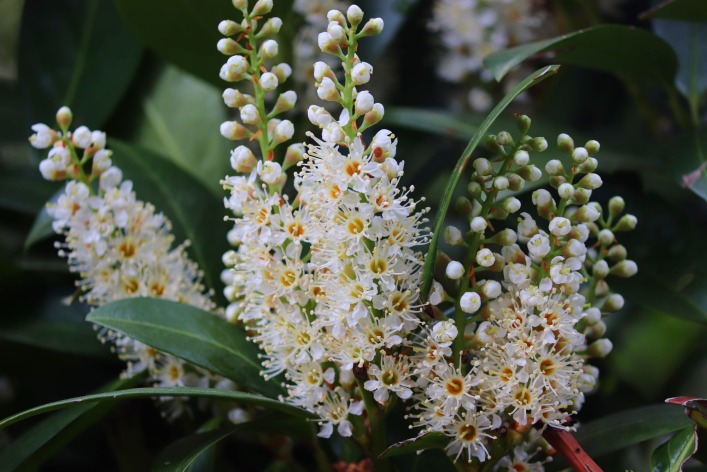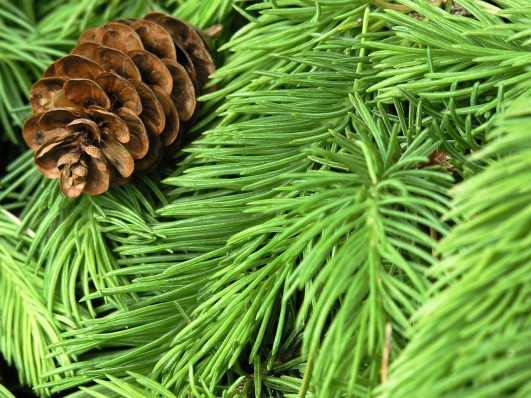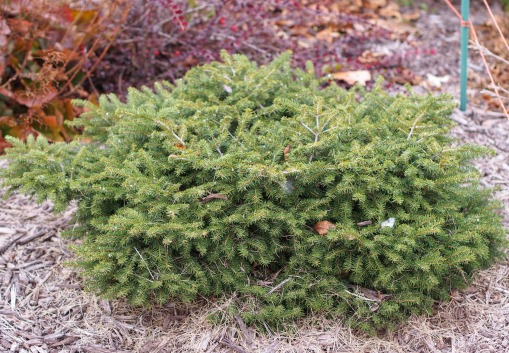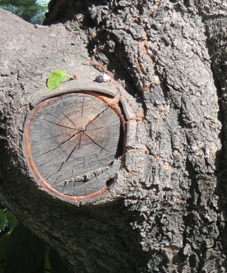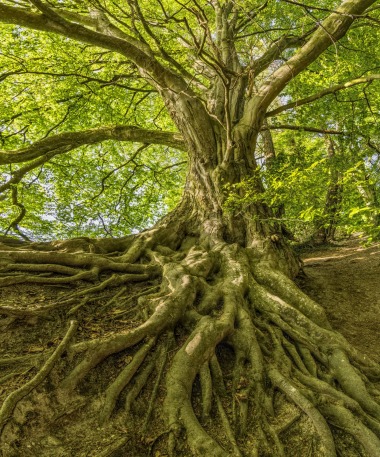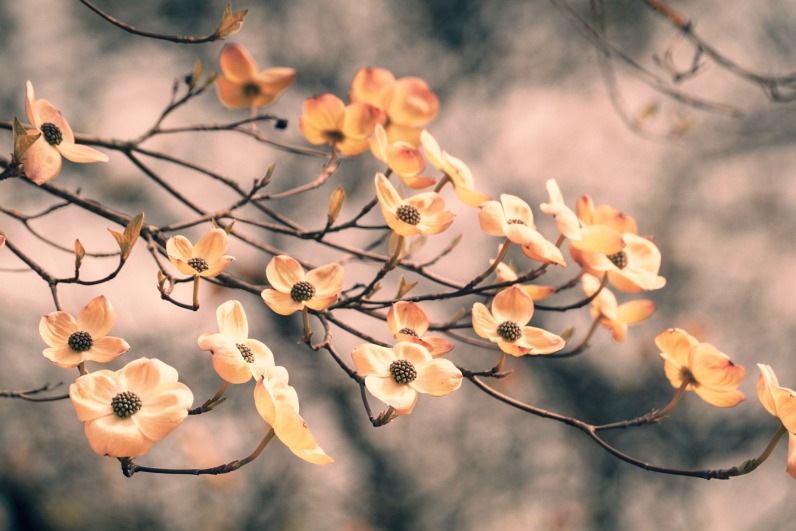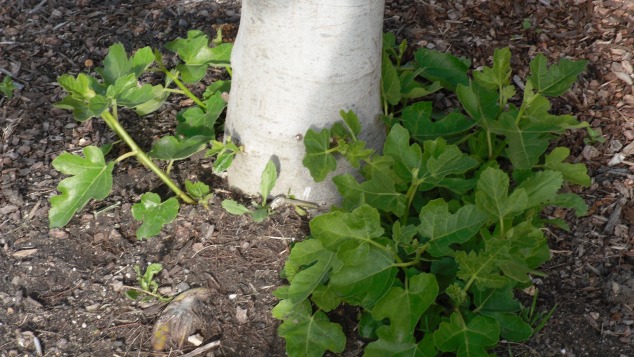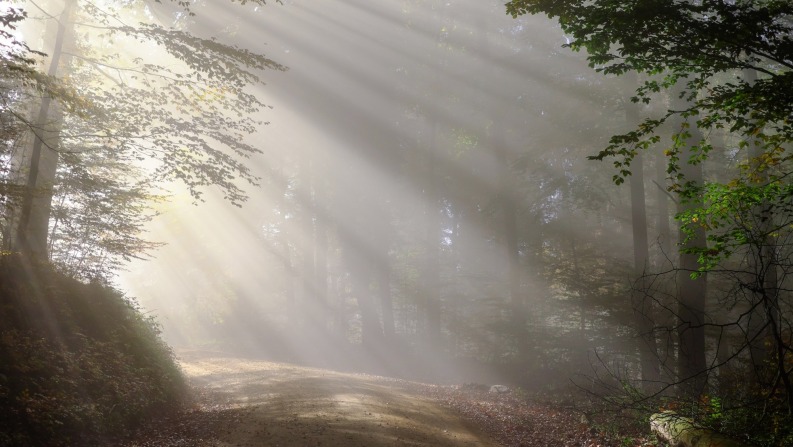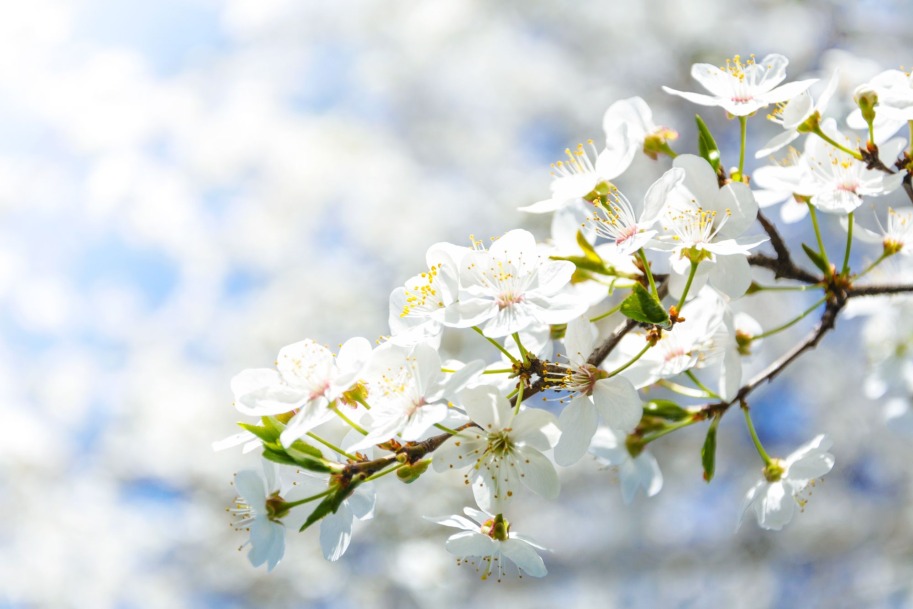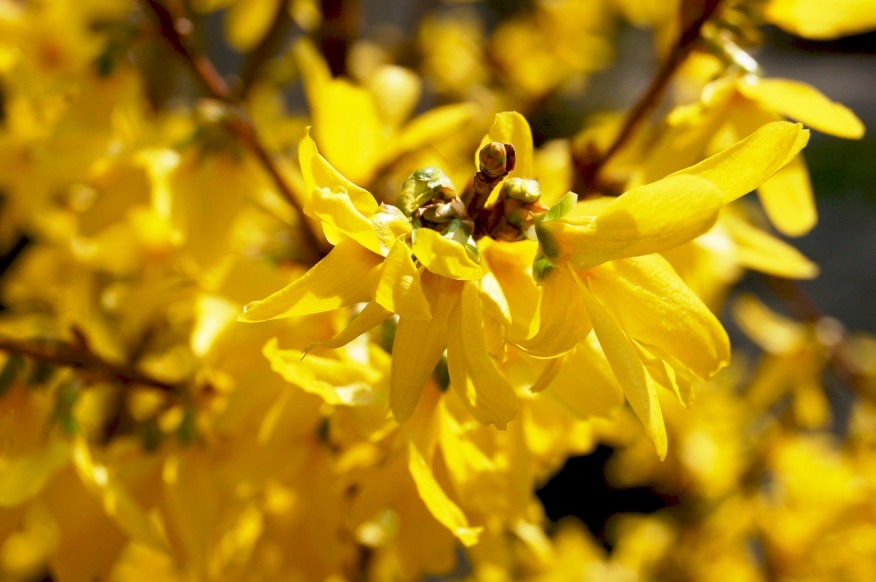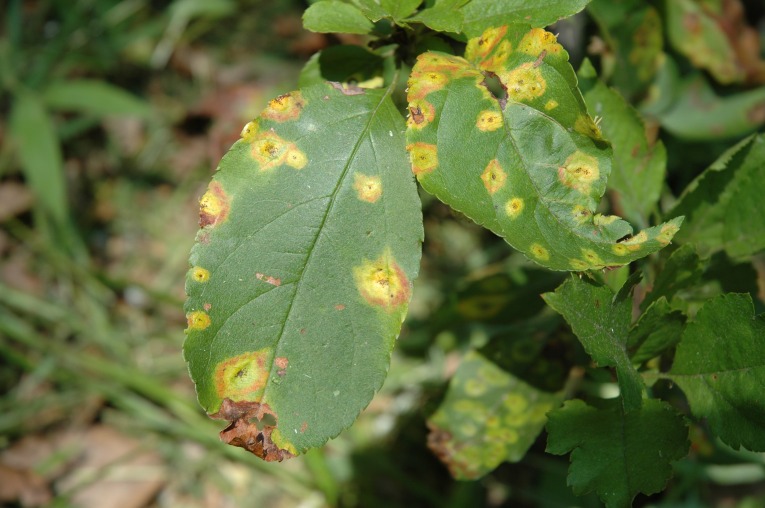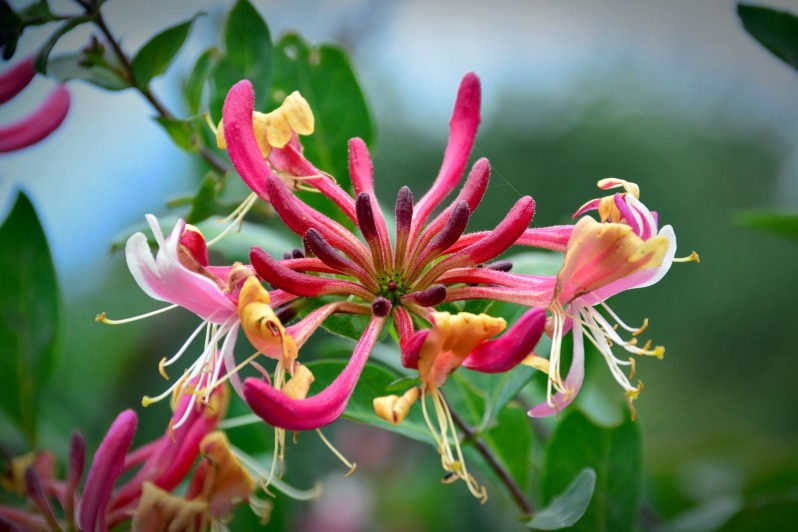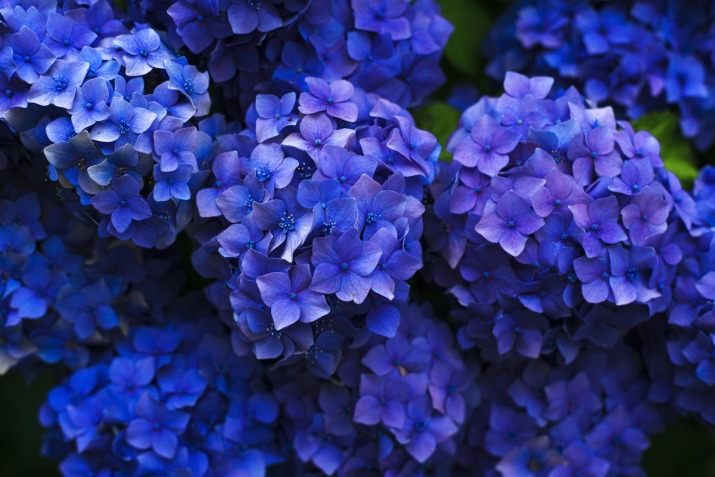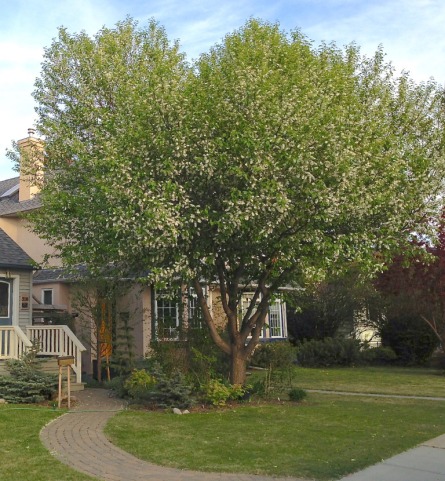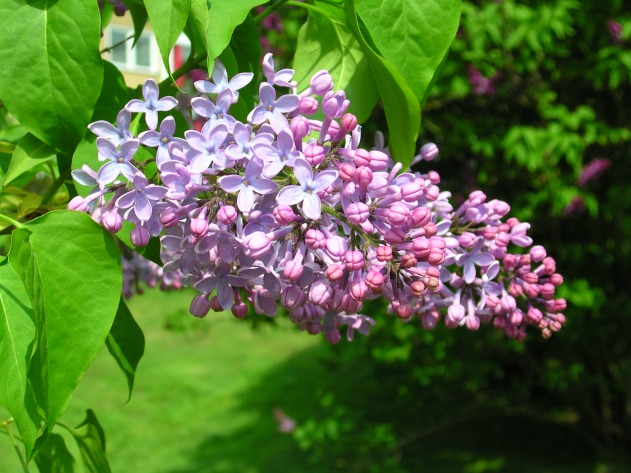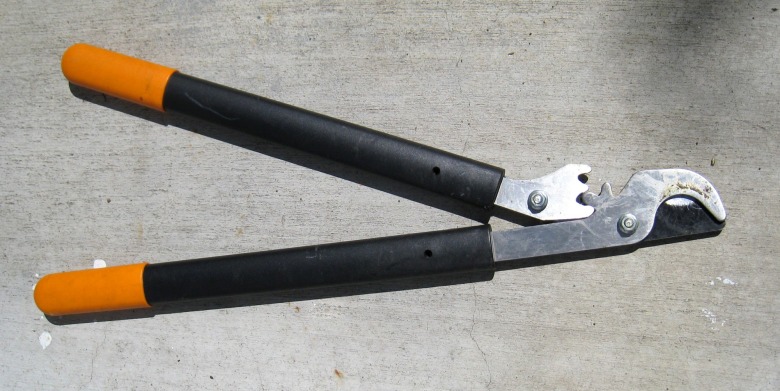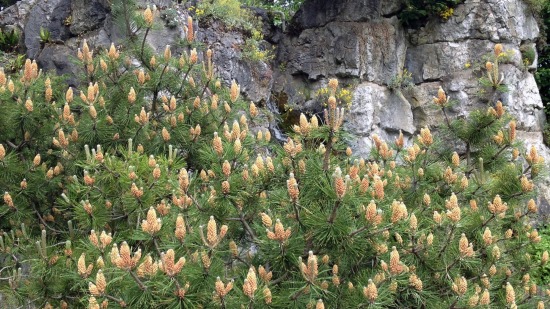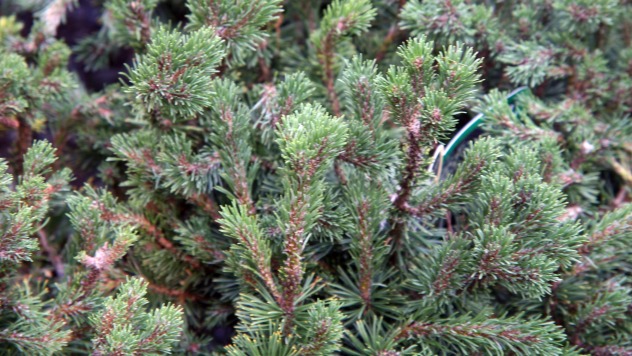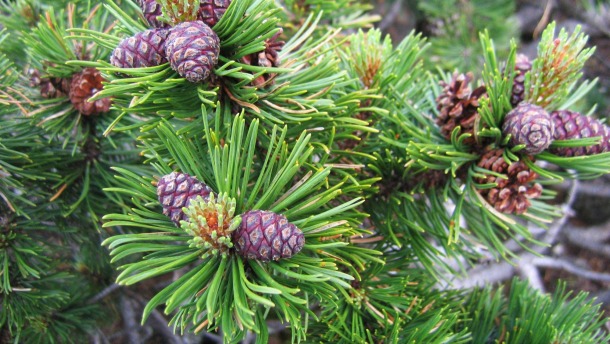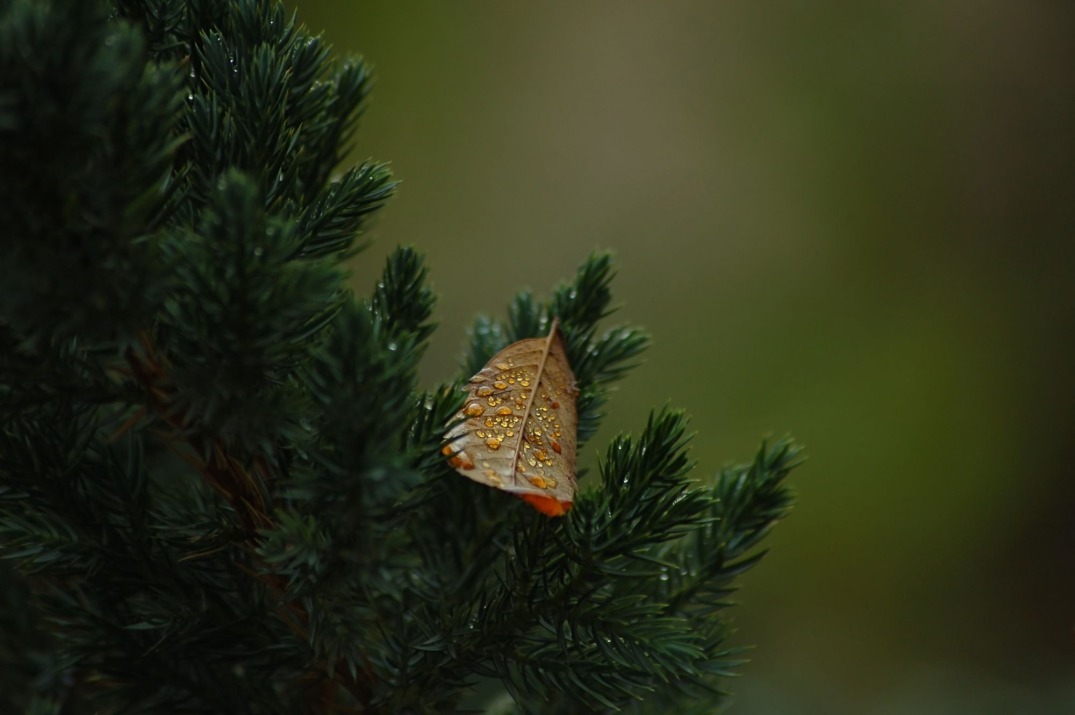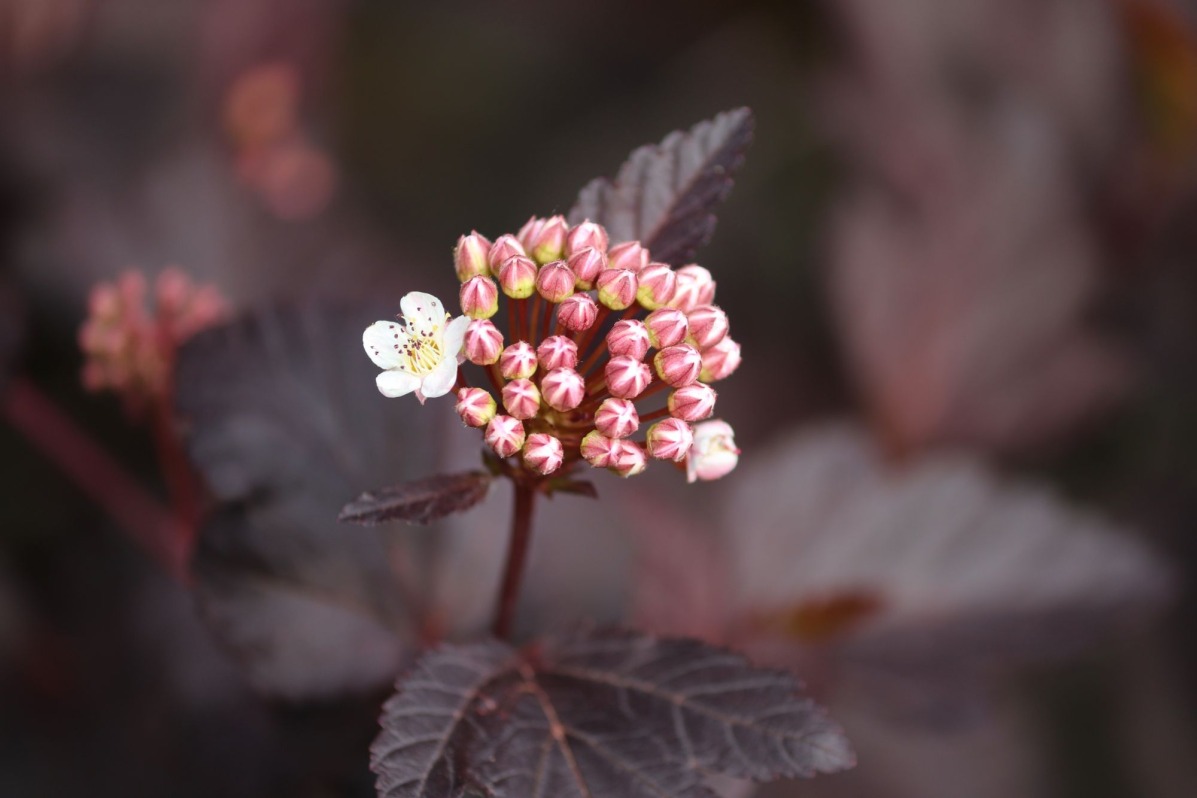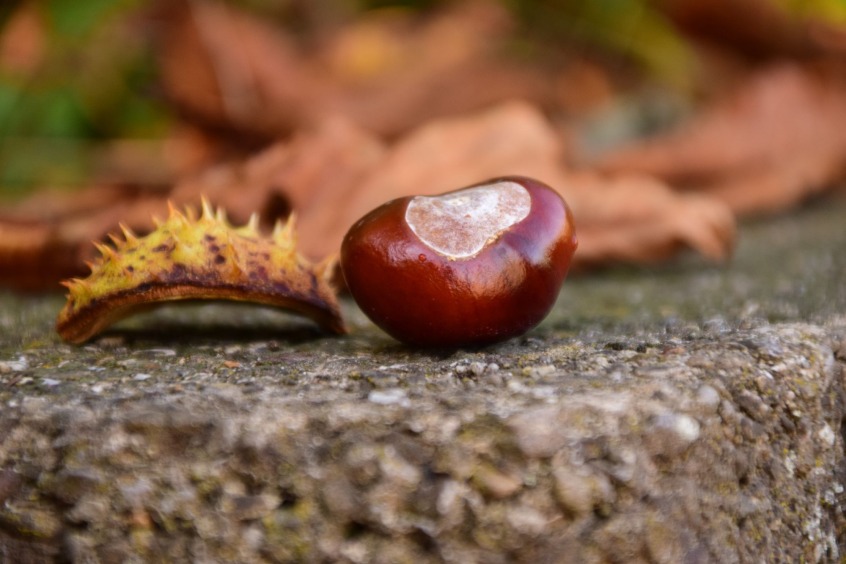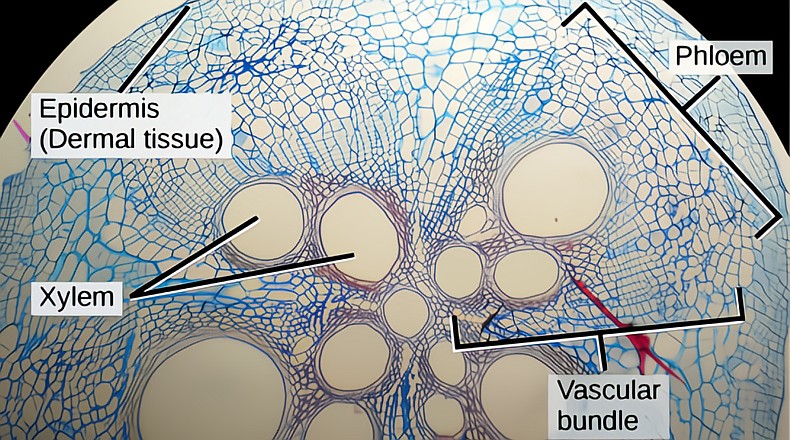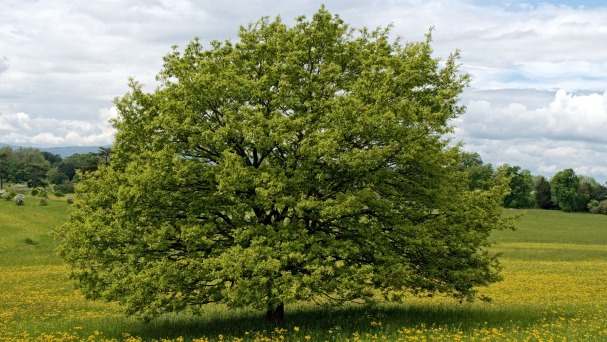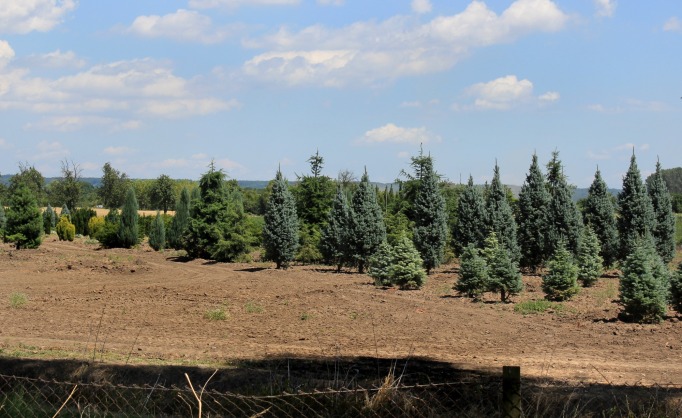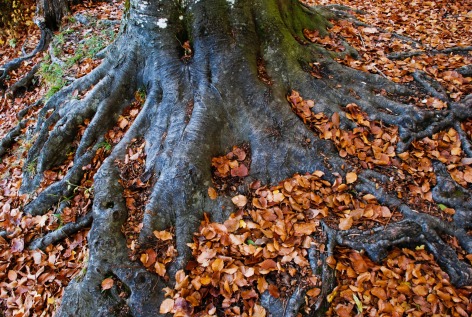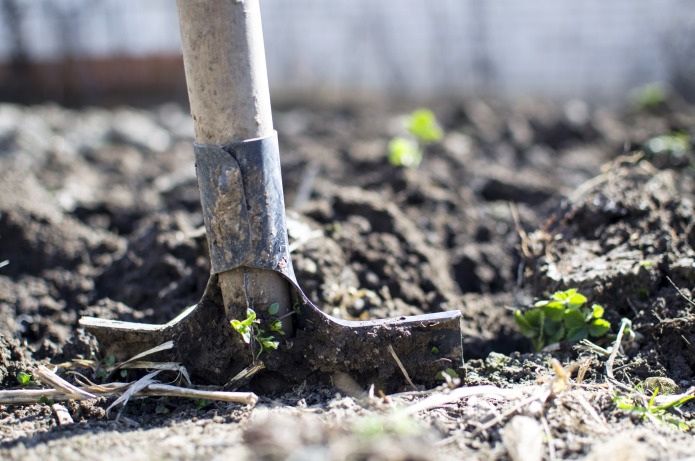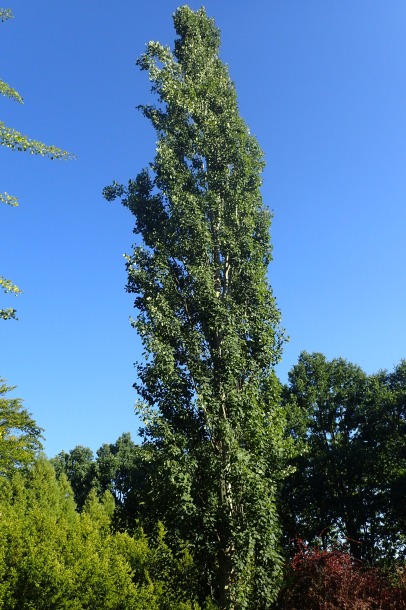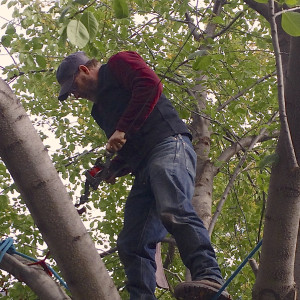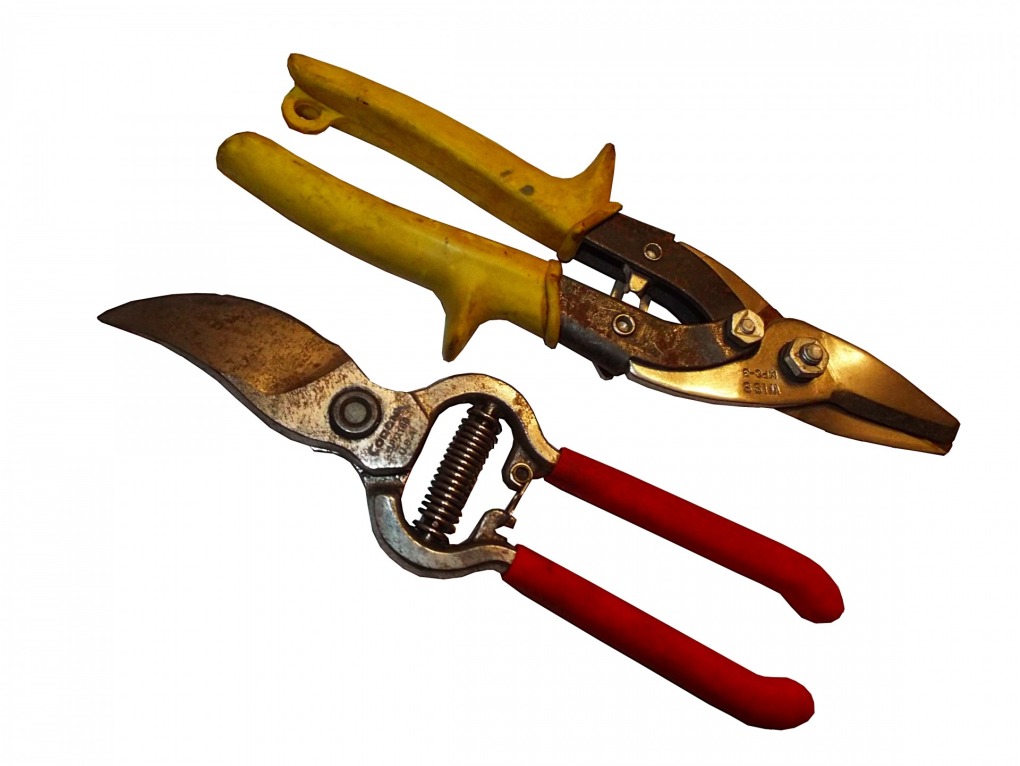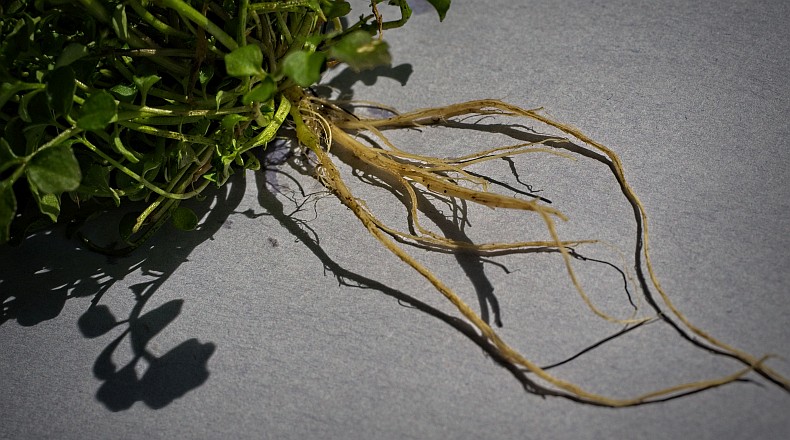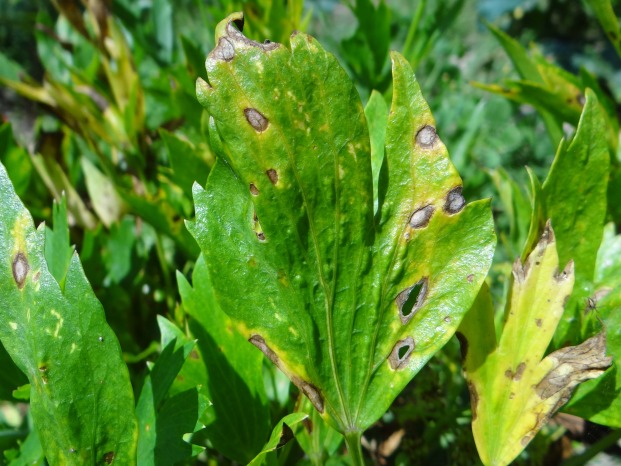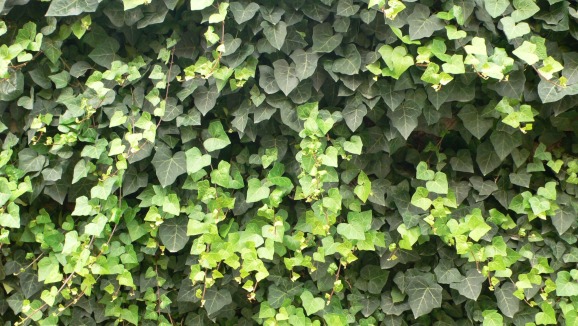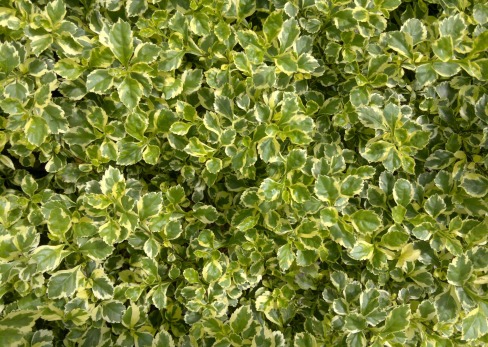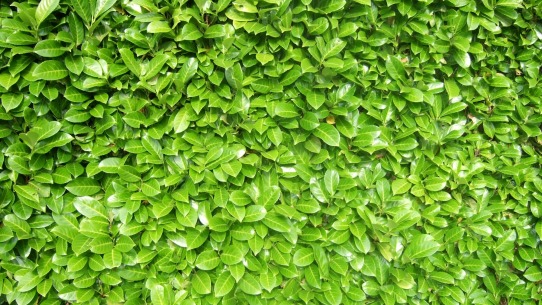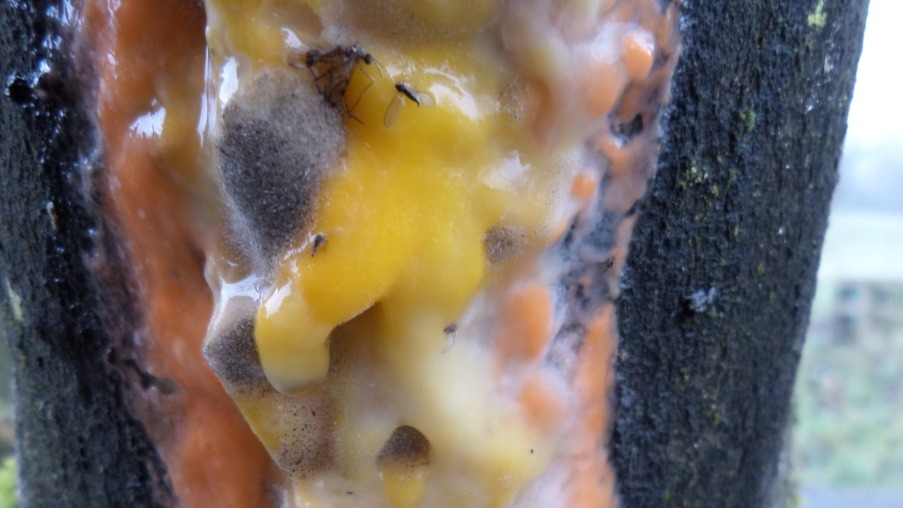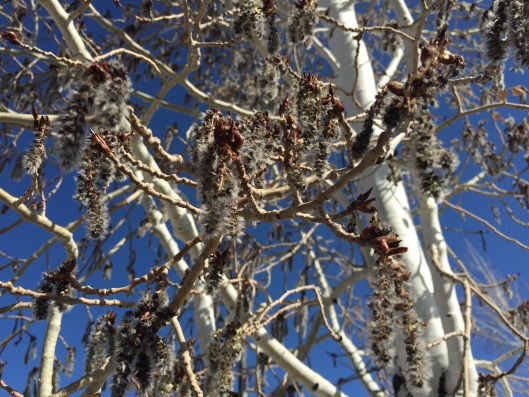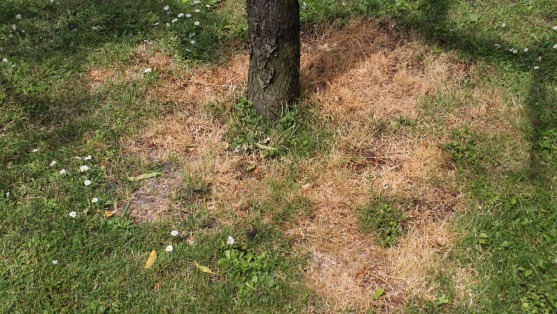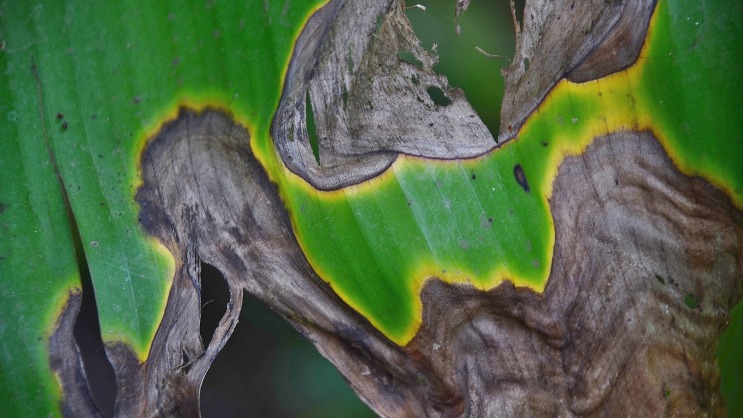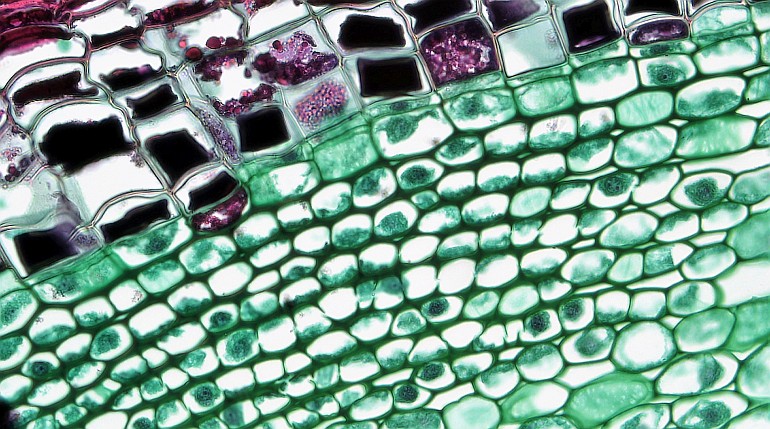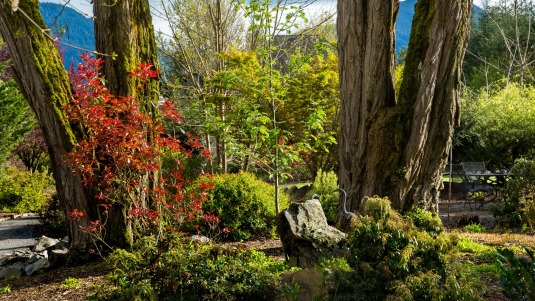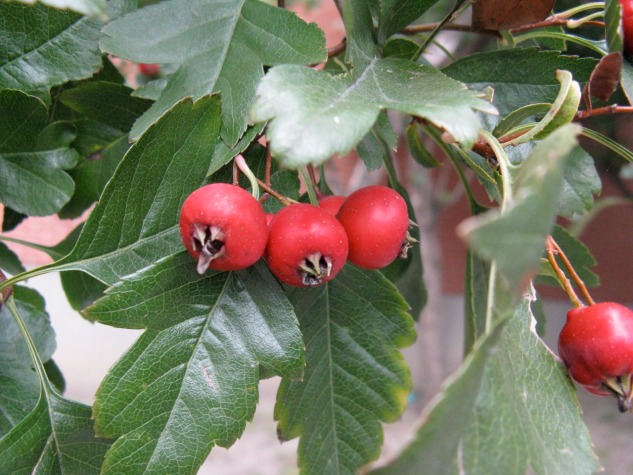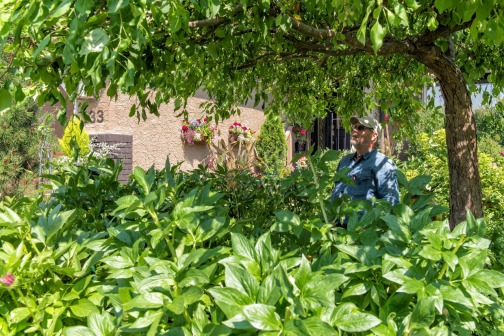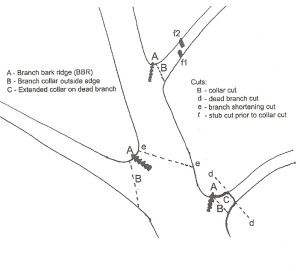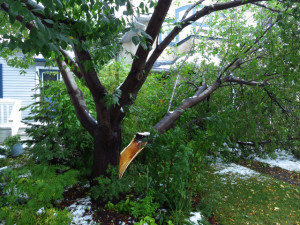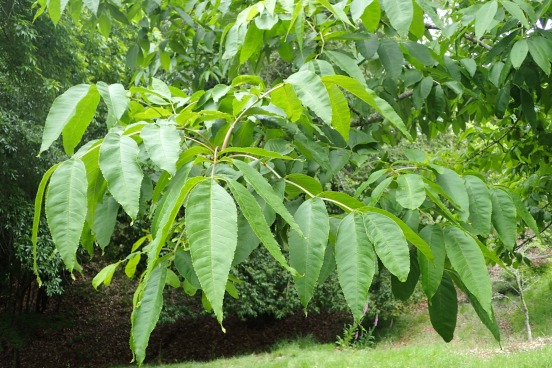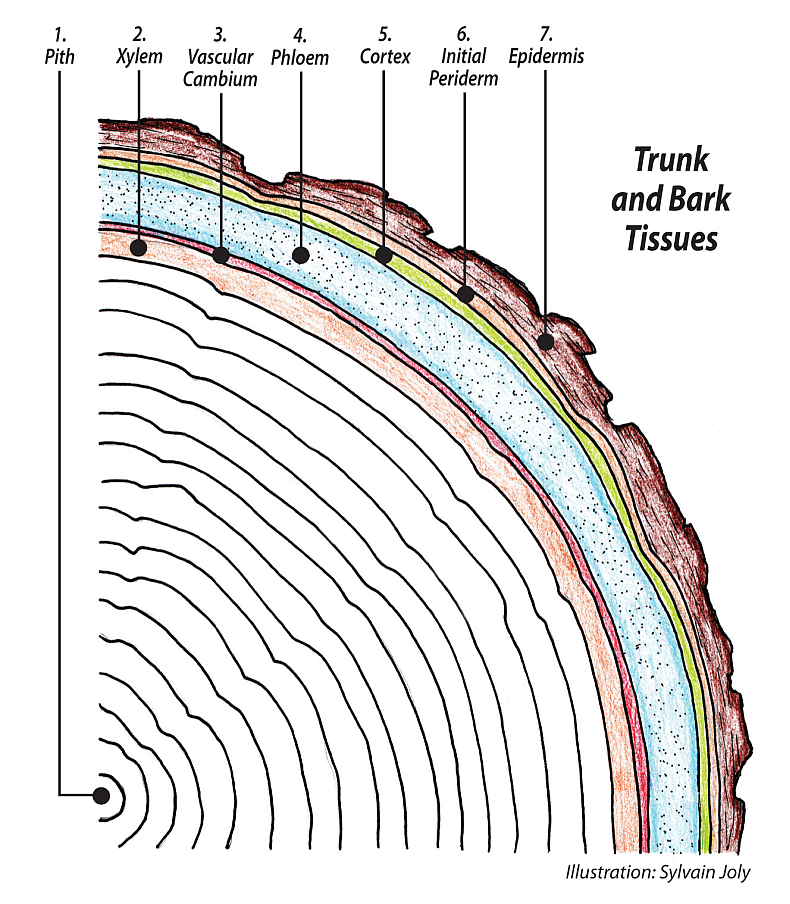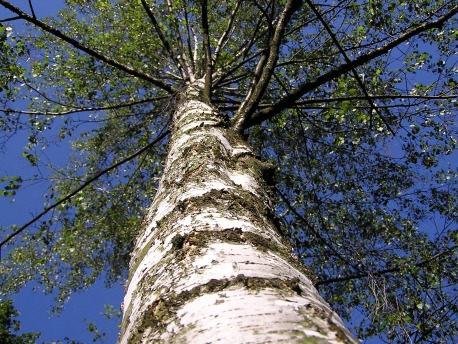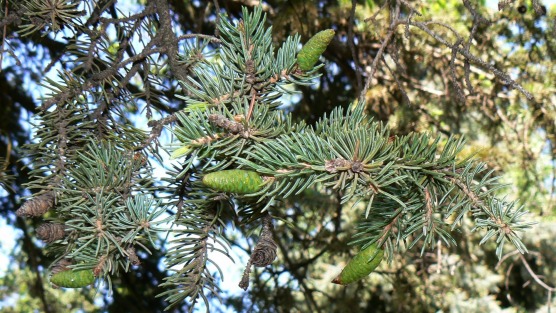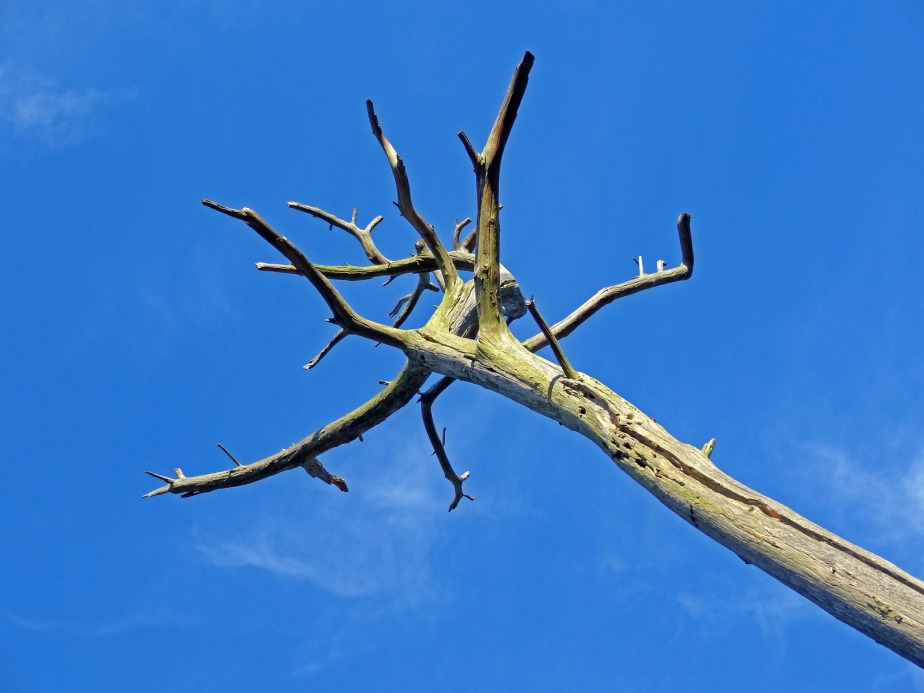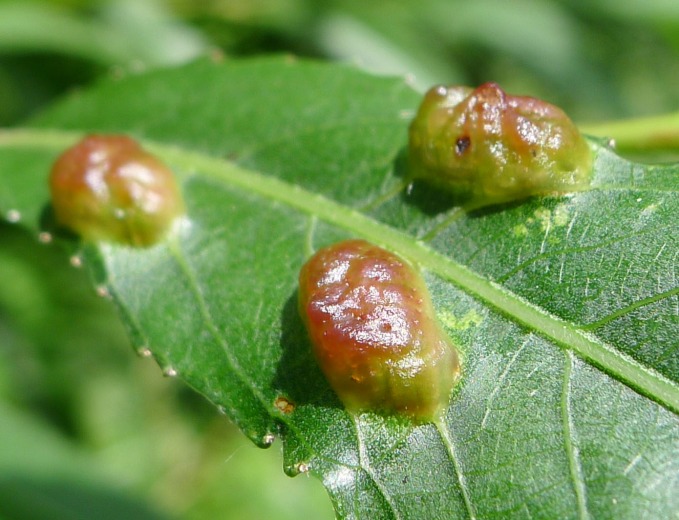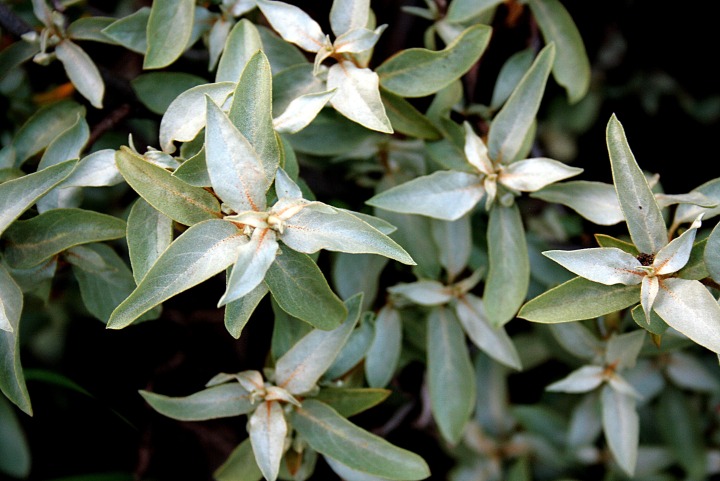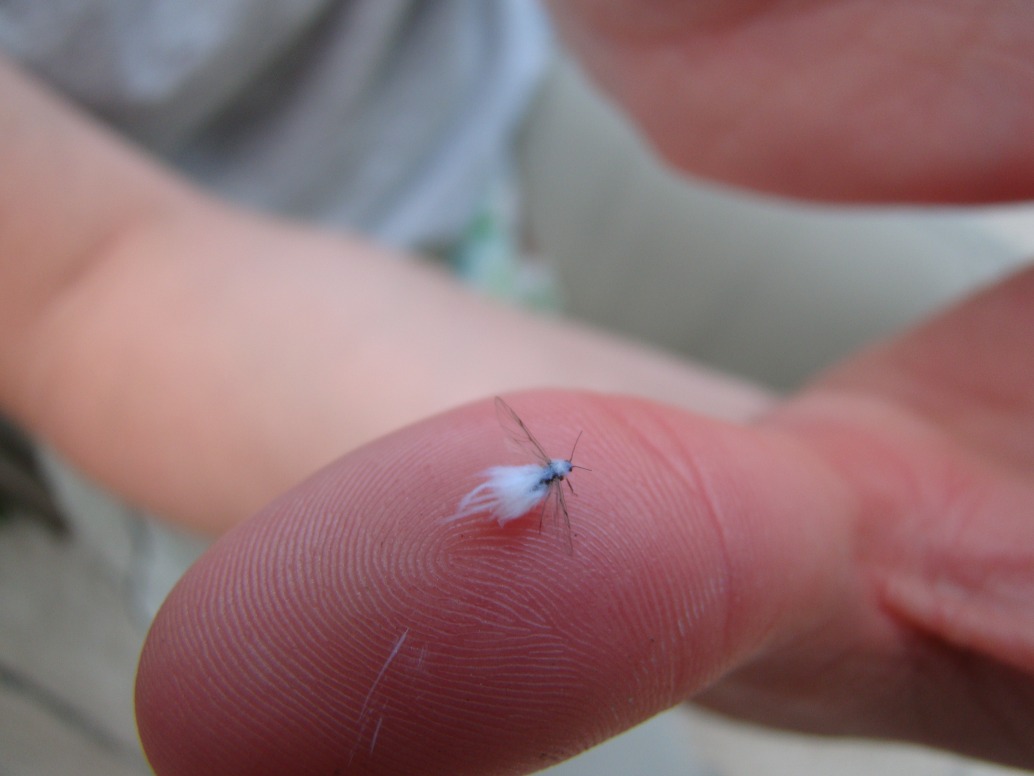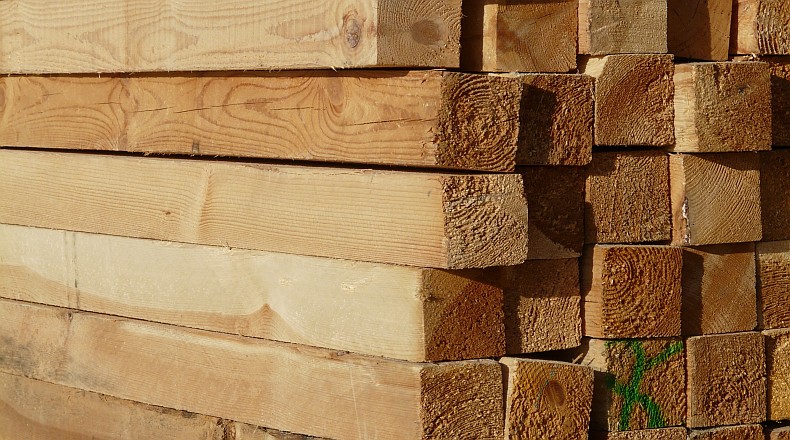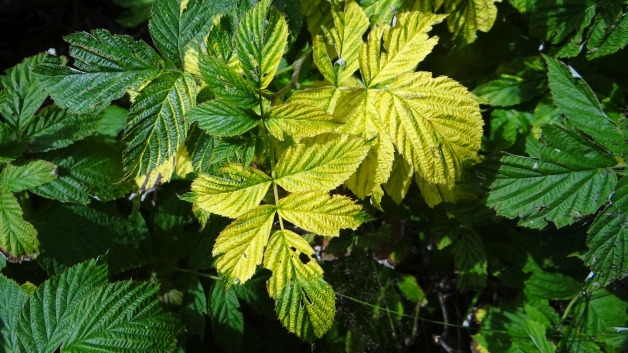The Peking cotoneaster, Cotoneaster acutifolia, has been the number one choice in our area for a hedge. These can become large plants. If left unpruned, a single plant will in time make an amazing five-metre ball. Considering the oyster shell scale epidemic in Calgary, perhaps the hedge use of cotoneaster will drop off. Many are the people who have cut their old hedges to the ground only to find that the new growth is as infected as the old was. Planted as single shrubs, unpruned cotoneasters are usually vigorous enough to defend themselves, much better that their heavily pruned brothers and sisters.
There are a couple of other interesting cotoneasters that have different forms from the hedge cotoneaster. The first is Cotoneaster adpressus, creeping cotoneaster. Growing low enough to be called a ground cover, creeping cotoneaster with its red berries and shiny leaves is a very useful garden accent. Cotoneaster integerrimus, the European cotoneaster, forms more of a mound, usually no higher than a metre, with grey/green leaves, red fruit.
All species of cotoneaster are fireblight susceptible, and oystershell scale susceptible.
Oyster Shell Scale:
At this time oyster shell scale may be causing more damage than any other insect in the Calgary area. Cotoneaster has been the hardest hit, but other plants are also susceptible -- apples, ash, aspens and others.
Scale feeds by sucking the fluids of tissue underlying the bark. During heavy outbreaks plant death can occur. There is one generation per year. The insects overwinter underneath their protective scales.The eggs hatch at end of May/start of June. Seasonal variations often occur. The emerging young scales are called crawlers; they move over the bark in search of a feeding site. This is the only time they are exposed, so spraying during the crawler stage is essential for control. They are tiny, much smaller than their host scale and it can take some practice to see them. Depending how the season is progressing, crawler activity can begin by late May. Crawlers can be shaken off infected limbs onto a sheet of paper, or caught with scotch tape.
If you find them, spray immediately. Once established at a feeding site they continue to grow, and are full size by approximately mid summer. Firmly entrenched under new scales the eggs are laid in early fall and they overwinter to begin the next year's conquest. Dormant oil application and pruning out of infected branches can be effective.
Rubbing branches with a coarse scouring pad that doesn't cut the bark works very well. It all depends on the plant and the degree of infestation.
Fire blight:
Fire blight is the big guy, one of few pathogens that can single-handedly kill a tree. A plant pathologist would call it Erwinia amylovora. First recognized in New York at the end of the 19th century, fire blight research opened the new field of plant pathology. A microscopic bacteria, it can be moved from tree to tree by bees, birds, squirrels, insects, arborists and their tools; the list goes on.
Fire blight usually enters the tree through the flowers, but any other opening will do. Hail damage to the bark, pruning cuts, and insect damage all work. Once inside the tree, the contest between the tree’s defenses and the strength of the bacterial strain begins. If your tree has a strong immune system (let’s call it that for convenience), the blight will never get through the door. The weaker your tree’s immune system, the greater advantage the blight has.
Once infected, the tree will go through a series of different symptoms. First are the wilted flowers and rusty red, fire scorched looking leaves. The dead branch tip may bend around in what is called a shepherd’s crook. As the disease progresses, whole branches will begin to die and the bacteria form a milky ooze that drips from branches and is easily carried to infect your other trees—or your neighbours' trees.
If not dealt with up to this this stage of infection,major sections of the crown will start to die. Only a heavy pruning job might save it.
Back in the day, antibiotics were sprayed on infected trees and had some good results. Restricted chemical use laws have now made this method difficult and expensive. The only way a tree with a less-than-optimal defense system is going to win is through early detection and complete removal of the affected branches.
That walk-through inspection of your garden becomes the difference between life and death.

